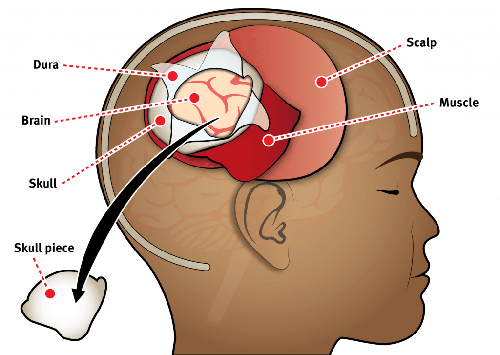
While resilient, the intricate labyrinth of the human brain is susceptible to rare yet potentially severe threats known as brain infections. These infections, encompassing a spectrum of conditions like encephalitis and meningitis, arise from the infiltration of harmful agents into the brain or its protective coverings, instigating inflammation and potential complications that can significantly impact a child’s well-being.
Brain infections in children emerge from various sources. Viruses, often the culprits behind conditions like enteroviruses or herpes simplex virus (HSV), are associated with viral meningitis or severe encephalitis. Bacterial invaders, such as meningococcus or streptococcus strains, possess the potential for grave illness. At the same time, fungal or parasitic infections, though infrequent, can pose risks, especially in children with compromised immune systems.
Identifying a brain infection in children can be akin to deciphering a complex puzzle. Initial symptoms—fever, headaches, or nausea—can seem innocuous. Yet, when combined with neurological manifestations like seizures, altered mental status, or recurrent vomiting, they become crucial indicators, signaling possible brain involvement that warrants immediate medical attention.
Diagnosing brain infections in children necessitates meticulous evaluation. Medical practitioners employ various diagnostic procedures, including blood tests to detect signs of infection, lumbar punctures to analyze cerebrospinal fluid, and imaging modalities like MRIs or CT scans to scrutinize brain structures. Treatment typically involves targeted antibiotics, antiviral medications, or supportive care to manage symptoms and prevent further complications.

While treatment is pivotal, a strong emphasis on prevention is equally vital in combating brain infections. Vaccinations play a cornerstone role; immunizations against measles, mumps, rubella, and meningococcus are effective shields against specific types of brain infections. They encourage good hygiene practices, and incredibly meticulous handwashing forms a crucial defense against the transmission of diseases among children.
Brain infections in children, though infrequent, demand unwavering vigilance and immediate action. Early recognition of signs, prompt medical attention, and adherence to recommended vaccinations and hygiene practices stand as fortresses against the potential threats posed by these infections.
Should any signs or symptoms suggestive of a brain infection manifest in a child, seeking immediate medical advice is paramount. Timely intervention and proper care can profoundly impact the prognosis and well-being of the child.
Please call Evercare Hospital’s 24X7 Hotline number 10678
©2023. Dr. Sarwar Jahan Bhuiyan. All Rights Reserved.
